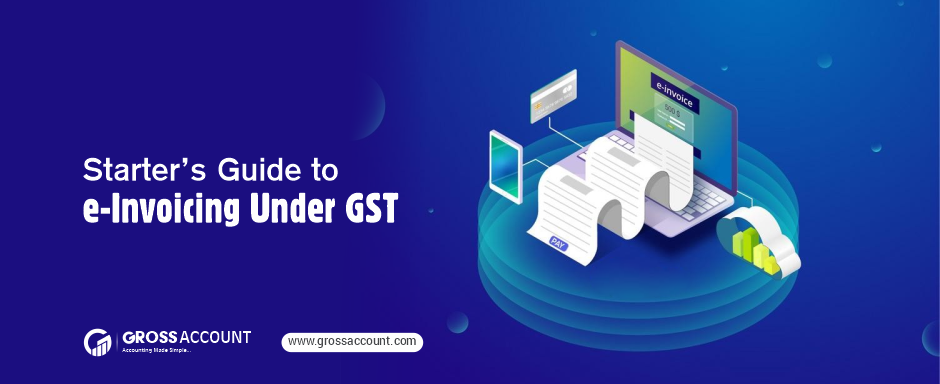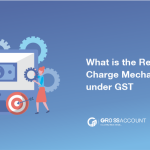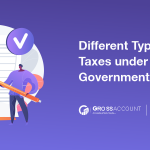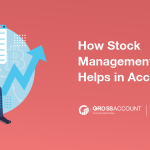Introduction
In the digital world, invoicing is generated by the software. The invoice which is generated by the software is known as e-invoicing.
The companies include the GST in their invoices. The transportation of goods or materials generates the ‘e-way bills’ through the common GST portal. In the market, there are various accounting software and systems available which help companies or businesses to generate e-invoicing under GST.
E-invoicing provides several benefits to businesses. The businesses easily create the invoice and without any errors.
The business can easily save the invoice and keep the previous invoice in the database. So when they need an invoice, then the sales team or marketing team of the companies can easily find the invoices.
E-Invoicing under GST
The ‘electronic bill’ is another name for e-invoicing. GST invoices differ from regular invoices in several ways. As a result, when businesses issued GST invoices, the IRP (Invoice Registration Portal), which is controlled by the GST Network, supplied them with an identifying number (GSTN).
When the companies create the normal or physical bill then they have to do the manual entry in the GST portal. But, when the companies create the e-invoice then the information will be transformed into both the GST portal and e-way bill portal that’s why they need to do the manual entry during the filing of GSTR-1 returns. Through the help of e-invoicing, the information is passed through the IRP to the GST portal.
The e-invoicing was introduced on 1st October 2020 for the taxpayers with an aggregate turnover RS. 500 crore. Then the e-invoicing was extended to the companies with an aggregated turnover RS. 100 crore on 1st January 2021.
From the 1st April 2021, CBIC notified that e-invoice will apply in the business with an aggregated turnover of more than RS.50 crore. The companies have the specified limit of turnover at the 2017-18 to 2019-20 financial year that is applicable for generating the e-invoicing under GST. Here, an aggregate turnover of all GSTINs will be registered under a single PAN across India.
Some businesses or companies used the facked invoices to avoid paying the taxes. Through this, the government prevents various serious problems. That’s why the government introduced the mechanism for e-invoicing to reduce fraud.
Currently, how are the businesses issuing invoices?
Currently, businesses or companies use accounting software to issue invoices. The details of invoices are manually uploaded in the GSTR-1 return. The recipient can view the respective file in the GSTR-1 reflected in the GSTR-2A.
The transporters must create the e-way bill. That’s why they again upload the invoices in excel or JSON manually but the details will remain the same.
Nowadays E-Invoicing is the best way to generate errorless invoices with the GST. The companies also get help directly from the GST Suvidha Provider(GSP).
Also Read: 7 PROVEN WAYS TO INCREASE THE PROFIT MARGIN FOR YOUR BUSINESS
What are the steps using the businesses to generate e-invoicing?
Now, here are the steps that help the companies or businesses, who want help by creating or generating e-invoicing.
1. ERP system as per PEPPOL
The organization uses the ERP(Enterprise Resource Planning) system to maintain or well-organize the workload. That’s why an ERP system is configured as per PEPPOL(make the forging purchases for the government of Europe), otherwise, the companies have to reconfigure the ERP system as per the PEPPOL. For that, the businesses get help from the software developers.
2. IRN(Invoice Register Number) generation
The taxpayers have two ways of generating the IRN(Invoice Register Number).
- To get the direct API integration or getting the integration via GST Suvidha Provider(GSP) by the registered IP address of the computer. The IP address of the computers is whitelisted on the E-Invoice portal.
- Also, the businesses used the bulk generation tools, through this, the companies can generate the JSON file. When the businesses can upload this JSON file in the e-invoice portal then it will generate the IRNs in bulk.
3. Provide all the details
The companies generate the e-invoicing through the accounting system then they have to provide all the details of the companies like billing name, suppliers’ GSTN, transaction value, GST rate, TAX amount, etc.
4. Upload the mandatory fields
The companies use the ERP software or billing software to generate the e-invoices then they have to provide all the necessary details and especially add the mandatory details on the IRP(Invoice Register Platform) via JASON file or through an application service provider.
5. Key details of E-Invoices
An IRP is an important factor of all E-Invoices. The IRP is being used to check for duplication as well as to assign a reference number. The IRN is a generating with four parameters…
- Seller GSTN
- Invoice number
- As per financial year(FY) in YYYY-YY
- Document type(INV/DN/CN)
6. QR Code
The invoice is useless without a signature, which is why it is necessary. Companies can update their bills with the IRP’s digital signature in the e-invoice, and a QR code will be added to the JSON file.
7. E-Invoice send through the portal
The companies generating the E-Invoice will be sent by the IRP to the GST portal for the GST returns. The supplier is applicable to convert the E-Invoice into the e-ways bill then the details forward to the e-way bill portal. Also, the buyers will get the E-Invoice through their registered email id.
The businesses can generate the E-Invoice with the IRN by following the above steps and saving their time.
Advantages or benefits of E-Invoicing
1. Real-time tracking
With the help of e-invoicing, the companies track the real-time data. This allows for the faster availability of ITC(Input Tax Credits). The businesses had difficulty tracking the physical invoices.
2. One-Time reporting
The businesses have to report the invoices for the GST and GSTR. But, with the help of the e-invoices, the businesses have to report the invoice only just one time. With the help of the IRN, the details of the invoices are automatically shown in the GSTR-1. The companies didn’t have to fill in the data manually on the GST portal.
3. Easy to generate e-way bills
The e-way bills are similar to e-invoices; the only difference is that the e-way bills include vehicle information. The rest of the information comes from the e-invoices that are recorded on the GST portal. As a result, businesses may quickly generate e-way bills as well as e-invoices.
4. Help the customers
When e-invoices are uploaded to the GST system, customers receive them on their registered email address. Customers can maintain track of their purchases with the companies using this method.
5. Reduced the data entry error
They have not organized the data separately because the e-invoices are generated in the same site. Invoices are automatically and in real-time transferred to the GST and e-way portals. As a result, the possibilities of a data entering error are minimal.
6. Decreased the frauds chances
The government is facing various problems by the duplicate bills to avoid paying the tax. Because of that, the government introduced the E-Invoice system in the market to reduce fraud. Companies have been unable to issue duplicate invoices using E-Invoices because they were required to utilise the IRN for each e-invoice issued by the IRP.
7. QR code
The businesses have to keep a copy of the original invoices. That’s why the companies put the QR code in every bill. When they scan the QR code, then the businesses can convert the invoice into the number of pdfs to calculate the amount of the ITC.
Recommended for you : WHAT IS INPUT TAX CREDIT (ITC) UNDER GST
Conclusion
E-Invoices are given various opportunities or benefits to the companies, businesses, organizations, buyers, and government as well. Digitalization world the businesses have several opportunities to reduce their workload and keep the errorless data. With the changing world, the supplier uses the technology to generate e-way bills with the e-invoices.






